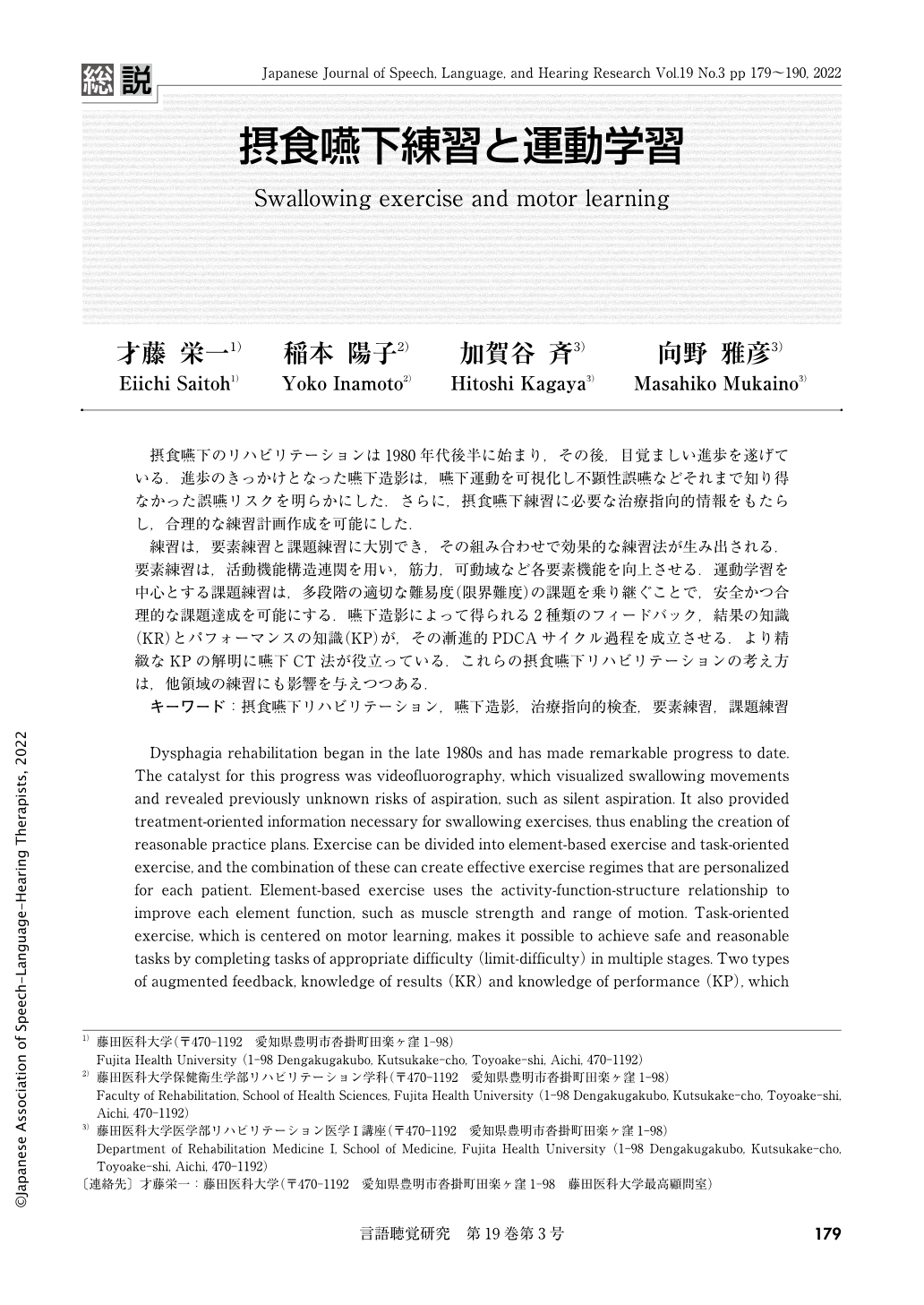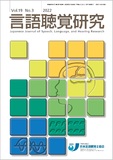Japanese
English
- 有料閲覧
- Abstract 文献概要
- 1ページ目 Look Inside
- 参考文献 Reference
摂食嚥下のリハビリテーションは1980年代後半に始まり,その後,目覚ましい進歩を遂げている.進歩のきっかけとなった嚥下造影は,嚥下運動を可視化し不顕性誤嚥などそれまで知り得なかった誤嚥リスクを明らかにした.さらに,摂食嚥下練習に必要な治療指向的情報をもたらし,合理的な練習計画作成を可能にした.
練習は,要素練習と課題練習に大別でき,その組み合わせで効果的な練習法が生み出される.要素練習は,活動機能構造連関を用い,筋力,可動域など各要素機能を向上させる.運動学習を中心とする課題練習は,多段階の適切な難易度(限界難度)の課題を乗り継ぐことで,安全かつ合理的な課題達成を可能にする.嚥下造影によって得られる2種類のフィードバック,結果の知識(KR)とパフォーマンスの知識(KP)が,その漸進的PDCAサイクル過程を成立させる.より精緻なKPの解明に嚥下CT法が役立っている.これらの摂食嚥下リハビリテーションの考え方は,他領域の練習にも影響を与えつつある.
Dysphagia rehabilitation began in the late 1980s and has made remarkable progress to date. The catalyst for this progress was videofluorography, which visualized swallowing movements and revealed previously unknown risks of aspiration, such as silent aspiration. It also provided treatment-oriented information necessary for swallowing exercises, thus enabling the creation of reasonable practice plans. Exercise can be divided into element-based exercise and task-oriented exercise, and the combination of these can create effective exercise regimes that are personalized for each patient. Element-based exercise uses the activity-function-structure relationship to improve each element function, such as muscle strength and range of motion. Task-oriented exercise, which is centered on motor learning, makes it possible to achieve safe and reasonable tasks by completing tasks of appropriate difficulty (limit-difficulty) in multiple stages. Two types of augmented feedback, knowledge of results (KR) and knowledge of performance (KP), which can be obtained by videofluorography, establish a progressive PDCA cycle process. The swallowing CT is useful for elucidating more accurate KPs. These ideas of dysphagia rehabilitation are also influencing exercise in other areas.

Copyright © 2022, Japanese Association of Speech-Language-Hearing Therapists. All rights reserved.


